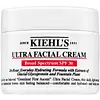What's inside
What's inside
 Key Ingredients
Key Ingredients

 Benefits
Benefits

 Concerns
Concerns

 Ingredients Side-by-side
Ingredients Side-by-side

Petrolatum
EmollientMicrocrystalline Wax
Emulsion StabilisingLanolin
EmollientIsononyl Isononanoate
EmollientHydrogenated Polyisobutene
EmollientIsopropyl Myristate
EmollientIsopropyl Palmitate
EmollientButyrospermum Parkii Butter
Skin ConditioningPolybutene
Triisostearin
Skin ConditioningOleyl Erucate
EmollientPolypropylene
Paraffinum Liquidum
EmollientSynthetic Wax
AbrasiveCyclopentasiloxane
EmollientRicinus Communis Seed Oil
MaskingGlyceryl Behenate/Eicosadioate
EmollientHydrogenated Lecithin
EmulsifyingDimethiconol
EmollientGlyceryl Citrate/Lactate/Linoleate/Oleate
EmulsifyingParfum
MaskingSalicylic Acid
MaskingTocopherol
AntioxidantTocopheryl Acetate
AntioxidantVegetable Oil
Skin ConditioningAlpha-Isomethyl Ionone
PerfumingBenzyl Salicylate
PerfumingCitronellol
PerfumingGeraniol
PerfumingLimonene
PerfumingLinalool
PerfumingCI 15985
Cosmetic ColorantPetrolatum, Microcrystalline Wax, Lanolin, Isononyl Isononanoate, Hydrogenated Polyisobutene, Isopropyl Myristate, Isopropyl Palmitate, Butyrospermum Parkii Butter, Polybutene, Triisostearin, Oleyl Erucate, Polypropylene, Paraffinum Liquidum, Synthetic Wax, Cyclopentasiloxane, Ricinus Communis Seed Oil, Glyceryl Behenate/Eicosadioate, Hydrogenated Lecithin, Dimethiconol, Glyceryl Citrate/Lactate/Linoleate/Oleate, Parfum, Salicylic Acid, Tocopherol, Tocopheryl Acetate, Vegetable Oil, Alpha-Isomethyl Ionone, Benzyl Salicylate, Citronellol, Geraniol, Limonene, Linalool, CI 15985
Water
Skin ConditioningGlycerin
HumectantOctocrylene
UV AbsorberHomosalate
Skin ConditioningEthylhexyl Salicylate
UV AbsorberSqualane
EmollientButyl Methoxydibenzoylmethane
UV AbsorberDimethicone
EmollientPEG-100 Stearate
Glyceryl Stearate
EmollientSilica
AbrasiveOctyldodecanol
EmollientStearic Acid
CleansingPhenoxyethanol
PreservativePalmitic Acid
EmollientTocopherol
AntioxidantDicaprylyl Carbonate
EmollientSteareth-100
Gel FormingAcrylates/C10-30 Alkyl Acrylate Crosspolymer
Emulsion StabilisingOphiopogon Japonicus Root Extract
Skin ConditioningCarbomer
Emulsion StabilisingChlorphenesin
AntimicrobialCapryloyl Salicylic Acid
ExfoliatingCaprylyl Glycol
EmollientXanthan Gum
EmulsifyingDimethicone/Vinyl Dimethicone Crosspolymer
Skin ConditioningDisodium EDTA
Sodium Hydroxide
BufferingCitrus Aurantium Dulcis Peel Oil
MaskingLimonene
PerfumingEctoin
Skin ConditioningHydrolyzed Hyaluronic Acid
HumectantMyristic Acid
CleansingMentha Piperita Oil
MaskingPseudoalteromonas Ferment Extract
HumectantEthylhexylglycerin
Skin ConditioningLinalool
PerfumingSalicylic Acid
MaskingWater, Glycerin, Octocrylene, Homosalate, Ethylhexyl Salicylate, Squalane, Butyl Methoxydibenzoylmethane, Dimethicone, PEG-100 Stearate, Glyceryl Stearate, Silica, Octyldodecanol, Stearic Acid, Phenoxyethanol, Palmitic Acid, Tocopherol, Dicaprylyl Carbonate, Steareth-100, Acrylates/C10-30 Alkyl Acrylate Crosspolymer, Ophiopogon Japonicus Root Extract, Carbomer, Chlorphenesin, Capryloyl Salicylic Acid, Caprylyl Glycol, Xanthan Gum, Dimethicone/Vinyl Dimethicone Crosspolymer, Disodium EDTA, Sodium Hydroxide, Citrus Aurantium Dulcis Peel Oil, Limonene, Ectoin, Hydrolyzed Hyaluronic Acid, Myristic Acid, Mentha Piperita Oil, Pseudoalteromonas Ferment Extract, Ethylhexylglycerin, Linalool, Salicylic Acid
Alternatives
Ingredients Explained
These ingredients are found in both products.
Ingredients higher up in an ingredient list are typically present in a larger amount.
Limonene is a fragrance that adds scent and taste to a formulation.
It's found in the peel oil of citrus fruits and other plants such as lavender and eucalyptus. The scent of limonene is generally described as "sweet citrus".
Limonene acts as an antioxidant, meaning it helps neutralize free radicals.
When exposed to air, oxidized limonene may sensitize the skin. Because of this, limonene is often avoided by people with sensitive skin.
The term 'fragrance' is not regulated in many countries. In many cases, it is up to the brand to define this term. For instance, many brands choose to label themselves as "fragrance-free" because they are not using synthetic fragrances. However, their products may still contain ingredients such as essential oils that are considered a fragrance.
Learn more about LimoneneLinalool is a fragrance and helps add scent to products. It's derived from common plants such as cinnamon, mint, citrus, and lavender.
Like Limonene, this ingredient oxidizes when exposed to air. Oxidized linalool can cause allergies and skin sensitivity.
This ingredient has a scent that is floral, spicy tropical, and citrus-like.
Learn more about LinaloolSalicylic Acid (also known as beta hydroxy acid or BHA) is a well-known ingredient for treating skin that struggles with acne and clogged pores. It exfoliates both the skin's surface and deep within the pores to help clear out buildup, control oil, and reduce inflammation.
Unlike AHAs (alpha hydroxy acids), salicylic acid is oil-soluble. This allows it to penetrate into pores which makes it especially effective for treating blackheads and preventing future breakouts.
Salicylic acid is also known for its soothing properties. It has a similar structure to aspirin and can calm inflamed or irritated skin, making it a good option for acne-prone skin that is also sensitive.
Concentrations of 0.5-2% are recognized by the U.S. FDA as an over-the-counter topical acne product.
It can cause irritation and/or dryness if one's skin already has a compromised moisture barrier, so it's best to focus on repairing that before introducing this ingredient into your routine.
While salicylic acid does not increase sun sensitivity, it’s still important to wear sunscreen daily to protect your skin.
If you are looking for the ingredient called BHA or Butylated Hydroxyanisole, click here.
Learn more about Salicylic AcidTocopherol (also known as Vitamin E) is a common antioxidant used to help protect the skin from free-radicals and strengthen the skin barrier. It's also fat soluble - this means our skin is great at absorbing it.
Vitamin E also helps keep your natural skin lipids healthy. Your lipid skin barrier naturally consists of lipids, ceramides, and fatty acids. Vitamin E offers extra protection for your skin’s lipid barrier, keeping your skin healthy and nourished.
Another benefit is a bit of UV protection. Vitamin E helps reduce the damage caused by UVB rays. (It should not replace your sunscreen). Combining it with Vitamin C can decrease sunburned cells and hyperpigmentation after UV exposure.
You might have noticed Vitamin E + C often paired together. This is because it is great at stabilizing Vitamin C. Using the two together helps increase the effectiveness of both ingredients.
There are often claims that Vitamin E can reduce/prevent scarring, but these claims haven't been confirmed by scientific research.
Learn more about Tocopherol